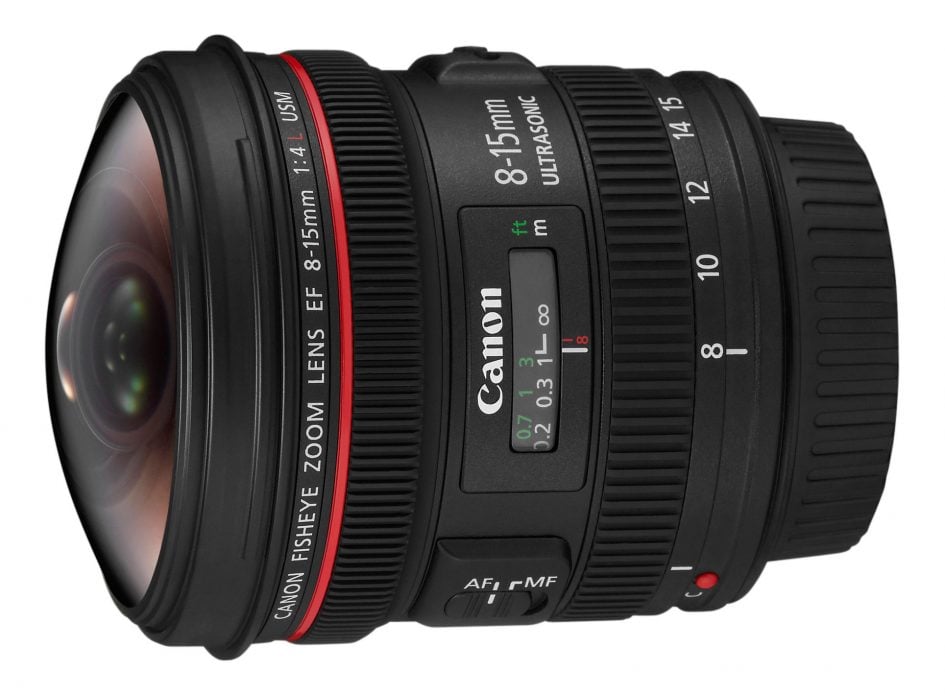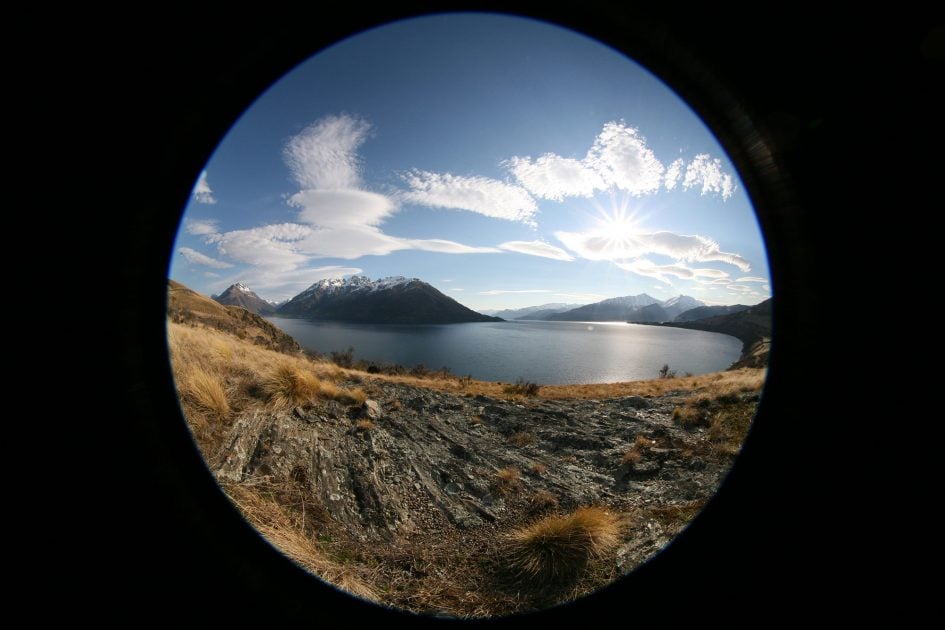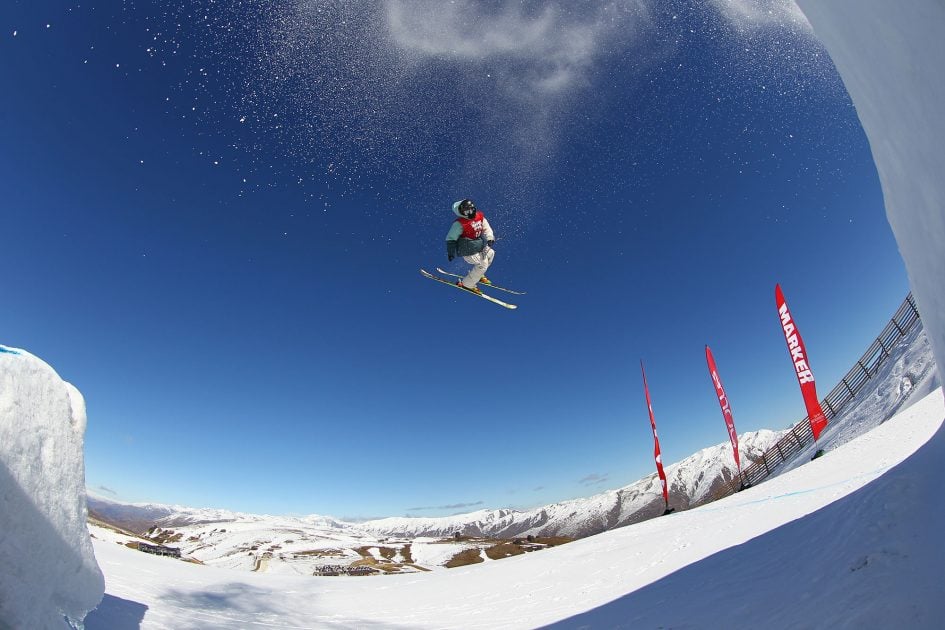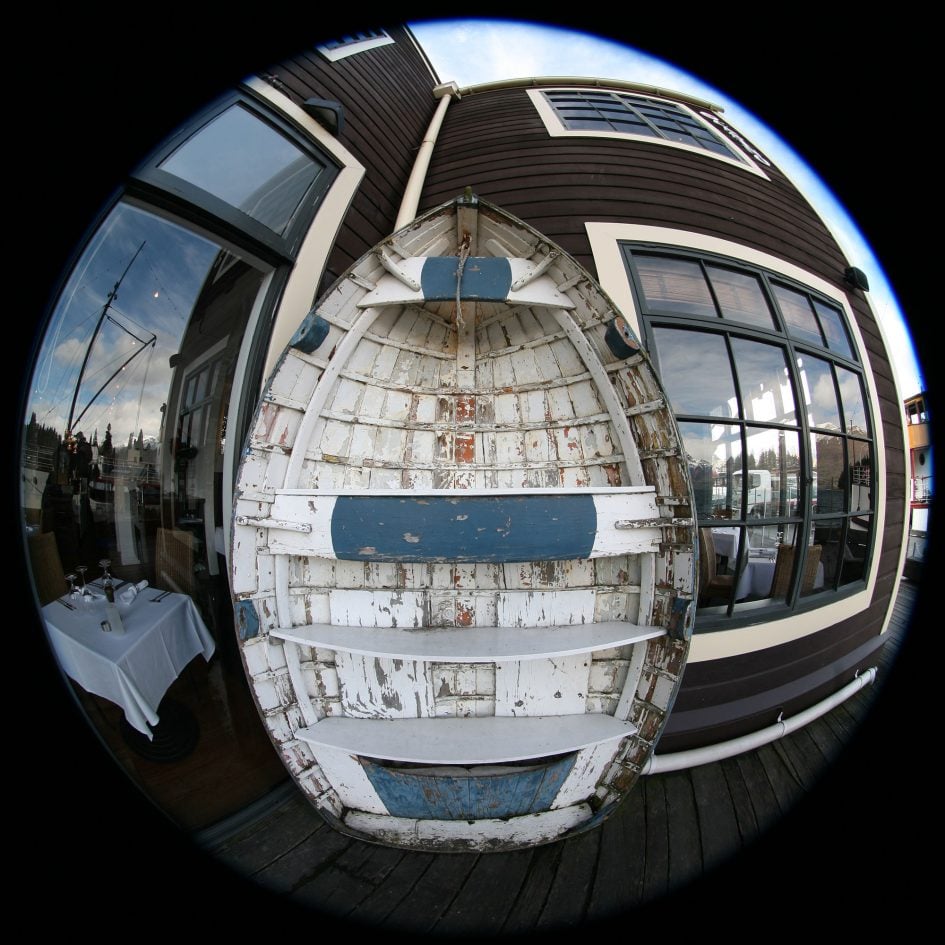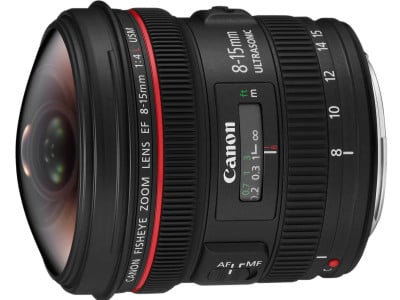In my results I noticed the worst fringing occurred when shooting with the 18 Megapixel APS-C bodies like the EOS 600D / T3i or EOS 7D. In contrast, shots taken with APS-H or full-frame bodies didn’t seem to suffer from it anywhere near as much. Interestingly further tests revealed it wasn’t down to problems at specific focal lengths, but rather the degree by which the sensor could become saturated.
Highlights which became completely blown-out understandably suffered from the worst fringing, and these tended to come from images recorded by the bodies with the smallest pixel pitch, and therefore (in most cases) the lowest dynamic range. So it’s not that full-frame or APS-H bodies were doing anything clever, but their typically larger pixel pitch meant highlights were typically less saturated, and therefore minimised the subsequent fringing.
Don’t get me wrong: give the EF 8-15mm Fisheye a high contrast border under any circumstances and it’s likely to surround it with a coloured fringe, but it’s interesting to really notice the impact of different sensor formats in this regard. Had the lens not been designed to work so well with all three sensor formats it wouldn’t have been as noticeable.
The good news though is regardless of your sensor format, chromatic aberrations are arguably the easiest artefacts to remove or reduce digitally. I found Canon’s own Digital Photo Professional and especially Adobe Camera RAW did a great job at reducing or even eliminating fringing from RAW files shot with the EF 8-15mm Fisheye. Just remember to shoot in RAW as the same degree of corrections are not possible with JPEGs.
In terms of other concerns, that bulbous front element may shrug-off water and dust, but what about direct knocks or scratches? I was careful to avoid these during my tests, but a lens which laps-up action sports and can focus as close as an inch from the glass is likely to receive some knocks sooner or later. Until we have more evidence from those in the field it’s hard to say how the lens will react to direct contact, but clearly it’s important to keep that vulnerable front element protected.
Which brings me to arguably the worst aspect of the EF 8-15mm Fisheye: its lens cap. As explained in the main review, this clips onto the tips of the rather good petal lens hood. So far so good, but the bad part is the cap can be released by the slightest touch, which means it easily comes off when you’re pulling the lens from a bag. Worse, it could even come off during transit, none of which is good news for what’s possibly the most vulnerable front element in the Canon catalogue. It’s a frustrating aspect to what is otherwise a great physical experience with the lens.
With that said, let’s see what alternatives are available before my final wrap-up.
What are your alternatives?
The Canon EF 8-15mm Fisheye occupies a unique space in the lens world, and if you want a single lens which delivers 180 degree views on all three body formats, there is no other choice. Likewise if you want a 180 degree diagonal fisheye image on an APS-H body – no-one else does it.
Alternatives only really exist if you’re happy with a fixed focal length fisheye for a specific format. Most obviously there’s Canon’s own EF 15mm f2.8 Fisheye, one of the oldest EF lenses, but still a popular choice. It’s smaller and lighter than the EF 8-15mm Fisheye, twice as bright and roughly half the price.
It delivers the same 180 degree diagonal fisheye image to full-frame bodies, so if you don’t need the circular fisheye option and aren’t bothered about using other body formats (or don’t mind their reduced field of view), then it remains a good choice. On the downside it lacks the USM focusing and weather-sealing of the EF 8-15mm, but again these may not be an issue for you. Perhaps a bigger issue though is finding one on sale, as the EF 8-15mm Fisheye officially replaces it. So if you fancy one, keep an eye open.
Sigma offers no fewer than four fisheyes for Canon bodies. Again nothing which delivers 180 degrees to an APS-H body, but if you have full-frame or APS-C you can choose from 180 degree diagonal or full circular options. All are brighter at f2.8 or f3.5 and all are cheaper too, but again they’re not weather-proofed, and of course as fixed lenses, they don’t offer the flexibility of the EF 8-15mm Fisheye. It’s revealing to note the EF 8-15mm Fisheye matches the coverage of three out of the four Sigma fisheyes, and it’s only the 4.5mm model which, by delivering a circular image to APS-C bodies, offers something unique.
Finally it’s worth noting the Tokina 10-17mm, an f3.5-4.5 fisheye zoom designed for APS-C bodies and which costs roughly two and a half times less than the new Canon. Having not tested it, I can’t speak for the quality, but for those who don’t need support for larger sensors, it certainly hits a much more attractive price point.
Canon EF 8-15mm Fisheye final verdict
There’s no doubt the Canon EF 8-15mm Fisheye is an exciting and original lens. In one fell-swoop it does the job of four models, three of which never existed in Canon’s own catalogue and one of which wasn’t made by anyone at all. For the first time, owners of APS-H bodies can enjoy 180 degree diagonal coverage, while those with multiple bodies can relax in the knowledge this one lens delivers proper fisheye coverage to all of them now and in the future.
Of course this is only relevant if you either own an APS-H body or multiple Canon DSLRs. If you only shoot with a full-frame or APS-C body, you can get the same 180 degree diagonal coverage from a prime lens costing roughly half as much, and while it may not have USM focusing or the same degree of weather-sealing, it will be optically quicker. For example full-frame owners who don’t need 180 degree coverage on smaller sensors or the full imaging circle on their own body could go for Canon’s own (albeit discontinued) EF 15mm f2.8 Fisheye. Twice as bright, half the price and a little smaller and lighter too. It may not be as tough or flexible, but that’s a trade many will be willing to make. Indeed as the EF 8-15mm whets our appetite for fisheye images, I suspect the older EF 15mm could end up enjoying a surge in sales while stocks last.
But all of this is assuming you even want a fisheye lens. They deliver an unmistakeably distorted view of the world which many consider to be little more than a novelty. One look at the sample images here may have you running for the hills; indeed even fisheye enthusiasts will tell you a traditional ultra-wide zoom, like a Canon EF-S 10-18mm, EF 16-35mm or Nikkor 14-24mm will be much more useful.
It’s also worth reiterating the two main downsides I found with the EF 8-15mm Fisheye during testing: a lens cap which comes-off far too easily, and chromatic aberrations in areas of high contrast. Although to be fair, the latter is again one of the easiest optical artefacts to remove digitally.
Ultimately a fisheye lens is for specialist photographers: those who are into big skies, extreme sports, astro-photography or deliberate distortion of reality. If that’s you, and you own (or are thinking of owning) multiple Canon bodies, then the EF 8-15mm Fisheye will be a dream come true. It’ll deliver the same 180 degree effect to all Canon bodies now and in the future, both for stills and video, while boasting sharp details across the frame, quick focusing and tough construction.
It’s one of those lenses which will have a minority audience yelling ‘YES!’ in triumph. At last, the lens they’ve always wanted. Others who like the effect and flexibility, but not enough to justify a purchase will find it the ideal lens to rent for a specific shoot. The majority may look on with bewilderment, but there’s no denying Canon’s developed a unique lens here which will be the envy of other systems. Previously Canon had been weak in fisheyes compared to rivals, but it’s now leap-frogged the competition and given a compelling reason for specialists to favour the brand. If you’re into this kind of thing and use multiple bodies, it comes strongly Recommended.
Good points
180 degree diagonal fisheye for all Canon DSLRs.
180 degree circular fisheye for full-frame DSLRs.
Tough build with weatherproofing.
Optically sharp across the entire imaging circle.
Bad points
Vulnerable-looking front element.
Lens cap easily comes loose.
Chromatic aberrations in areas of high contrast.
Full circular fisheye only available to full-frame.
